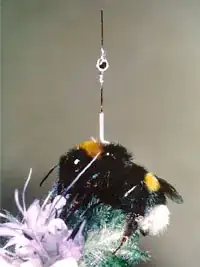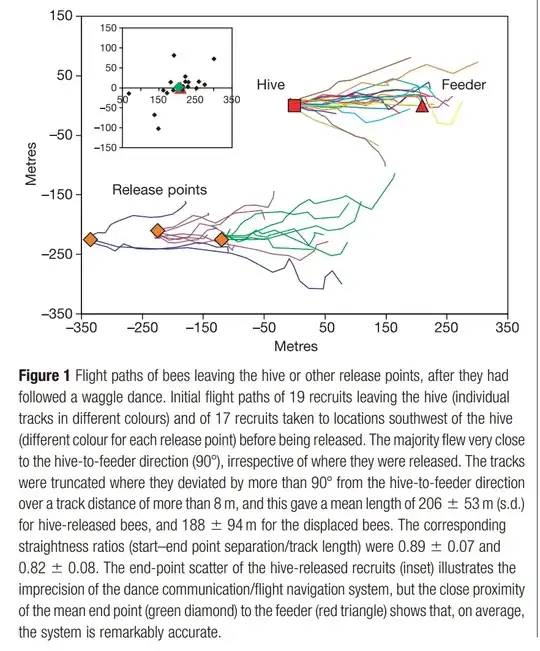Following the Wikipedia sources, I found:
This described consisted of a number of ingenious experiments designed to test if the bees are being recruited to fly in a particular direction, or whether odour forms some part of the cue.
Their technique sounded like a science-fiction plot: they attached transponders to bees and tracked them individually by radar. They explain insect-tracking transponders only weigh between 6-20 milligrams; 10 years into their future and I still find this astonishing. I got distracted and followed it up. Forgive me for the digression, but here is a picture:
 Image source
Image source
They found some results that were consistent with the idea of a direction-based dance, but inconsistent with odour plumes.
The key result was that capturing and moving the bees would effectively disorient them - they would head in the same vector from the release point as their would have taken from the capture point.

Another line of evidence was the absence of behaviours associated with other insects trying to detect odours.
[...] the flight paths showed no
evidence of the casting or upwind zigzagging that is known to
characterize odour-following flight in other insects. These two
facts, and the flight path data [...] together carry
the very convincing inference that recruits leave the hive with prior
knowledge of the direction and distance of a food source that they
have never previously visited. By themselves, these observations
thus provide extremely strong, direct support for von Frisch’s
hypothesis that recruited bees ‘read’ the waggle dance, but the
most compelling evidence comes from the flights of displaced
recruits.
They point out that the waggle dance alone is not 100% reliable, with some unsuccessful insects returning to the hive to get the directions again, and that odour and visual cues are important in the final stages of finding the food source.
We hope that together with earlier
studies, particularly those of Gould10, Srinivasan et al.13 and Esch
et al.14, our results will also be accepted as a vindication of the von
Frisch hypothesis.

